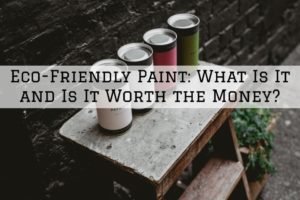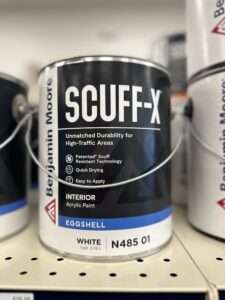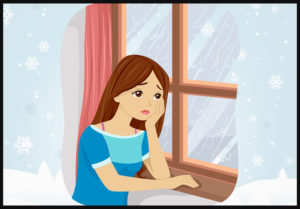House Painting Ideas For The Kitchen – Painting Kitchen Cabinets
What are the best methods for Painting Kitchen Cabinets?
House Painting Ideas Q&A with Just Add Paint, Painters from Camp Hill, PA
“Change The Look Of Your Kitchen By Painting The Kitchen Cabinets All In One Day”, “Complete Kitchen Makeover For The Cost Of A Can Of Paint”, “House Painting Ideas: Modernize Your Kitchen For Under $200 By Painting Your Kitchen Cabinets”. These are just a few of the article titles on painting kitchen cabinets that have come across my newsfeed over the last 2 weeks. As someone who paints about a 40 sets of cabinets per year, I decided it was time to put some of these myths to rest and write an article from the perspective of a professional to help educate DIYers (and professionals if you are still tweaking your process). By this I mean I am going to explain the labor and materials it will require from prep to finish to paint cabinets in a way that you can expect them to hold up to daily wear and tear, and be covered by a warranty. HINT: THIS IS NOT A 1 DAY PROCESS. To keep things simple, I am going to use a question and answer format with the most common questions I receive from customers.
- I am not sure what type of wood my cabinets are made of, does this matter? Not really. The process of painting kitchen cabinets is usually the same regardless of the material they are made of. The exception to this rule is that we have the option to use a less volatile primer on some composite and laminate surfaces. I am more interested in how deep the grooves are in the wood, and if my customer will be bothered by seeing that “natural wood” type of texture or not. This is not much of an issue with certain types of wood (cherry, maple) but can be with others (oak).
-
Can I save money by not priming my kitchen cabinets? Yes, but you will want to call someone who cares less about their work. There are multiple issues that make priming necessary, including creating a uniform surface for painting, adhesion, and the need to seal wood tannins, to name a few. More on that later…
- What is involved with prep? Like most things related to painting, surface preparation is the most important step. Cabinets are usually both shiny and contaminated with kitchen grease, both of which need to be dealt with. Less porous wood will be much easier to properly prep since kitchen grease won’t be stuck in the grooves. Plan on more time for porous wood. I typically clean with original Krud Kutter or Krud Kutter De-Glosser (both citrus based, non- toxic cleaners) and sand with a 220 grit sandpaper. If there is a healthy coat of polyurethane still intact, I try to sand lightly enough that I do not break through this surface. My experience it that poly is a better, more consistent surface for primers to stick to when compared to a bare, stained wood. We use a Festool Dustless Sanding/HEPA Vac system for dust control. Look this system up if you are unfamiliar, it is an incredible tool and a must have for any wood enthusiast.
- Are all primers the same? Can I just use a paint and primer to paint my kitchen cabinets? No and no, with the exception of laminates if you are feeling lucky (which I never am). A high quality latex primer will stick to a laminate, but it will not seal in any sort of oil-based residue that might make it through the prep process. While the goal is always to get kitchen cabinets perfectly clean, it is a good idea to assume there still is a minuscule amount of something that will get in the way of paint sticking. The best choices here are Oil-based and Shellac-based primes. I know some very talented professional woodworkers who make good arguments for each. Oil-Based primers will fill in deep grooves better because they dry to a thicker millage, and they do a decent job of blocking wood tannins. Shellac-based primers dry thinner but will often block tannins better. Wood tannins are tricky and should not be ignored – they can appear to be sealed with a latex primer for months or even years at a time and then appear out of nowhere. I expect most of the articles mentioned in the opening paragraph did not involve a 2-year check up of the cabinets they were written about, because this happens more often than not when latex primer is used. Sometimes latex primers will claim on the can that they can seal wood tannins. Ignore this.
-
The fumes from these primers are terrible, do you wear a respirator when applying these products? Most definitely YES. Both Oil-based and Shellac-based primers have a nasty odor and have a higher VOC content than their latex counterparts. Shellac-based primer fumes will clear out of the air more quickly, while oil-based odors tend to linger for longer periods of time. We always open windows for proper ventilation, and suggest that family members (pets too!) leave the house when the priming process is going on. For 24 hours if at all possible.
- How do you apply the paint? Hand roll or Spray? Some of each of these can be used. I usually use foam rollers on the cabinet bases that are attached to the wall, and doors and drawer fronts are sprayed at our shop. Rolling these products is tricky and requires some practice, as well as product knowledge and patience. Both primers and paints need to be thinned to keep texture to a minimum. Thin Oil-based products with paint thinner, thin Shellac-based products with denatured alcohol, and thin latex-based products with either Flotrol or some other form of Latex Extender. Latex Extenders have the dual purpose of giving you more “open time” (the amount of time you have to work with paint before it starts to dry) and they allow the paint to level or “flow” to a flatter, more uniform finish. You will need to experiment to find out what works best for you. This is especially important with the spraying process. I do not recommend brushing and rolling doors unless you don’t mind them looking like they were done by hand. Doors can and should look like they came straight from the factory if the right type of sprayer is used.
-
What types of sprayers are used for painting kitchen cabinets? I have used both an airless and an HVLP set up, and lately stick almost exclusively to the HVLP. It uses a very low, consistent pressure (about 10 PSI) to put down thin and precise coats of both primer and paint. It is important to note that different tip sizes are used for different materials, with a #2 or #3 working best with the primers, and a #5 or #6 for latex-based topcoats. Once again proper ventilation and respirators are an absolute must when working with any type of paint sprayer.
- What is the best type of paint for painting kitchen cabinets? I have had the most consistent results using 2K waterborne lacquer (aka 2K poly). This paint is a little more challenging to work with than standard house paints. Complicating factors include: Ultra fast dry time, the need for additives (hardeners and levelers), and great difficulty in achieving an aesthetically pleasing look without professional sprayer. I would not recommend using it if you are not already an experienced painter with experience on a high quality sprayer. I like this product for several reasons; It is extremely durable, has great stain, heat, and moisture resistance, and tends to move with wood rather than cracking out. Most important, water-based lacquer product almost always meet KCMA requirements. These are standards that furniture must pass coming out of the factory, so it is an industrial strength product. It generally takes me 2 coats of primer and 2 coats of finish paint before I achieve the outcome I desire.
- How long does it take to paint kitchen cabinets? That’s a great question, and you will get a different answer from company to company and product to product. Just Add Paint – painters in Camp Hill, PA, usually take a week from start to finish. This includes 2 days in house, and 3-4 days of spraying to allow for proper dry/cure time in the shop.
- How much does it cost to paint kitchen cabinets? Cost can range drastically depending on type of wood, number of cabinets, condition of cabinets, logistics and accessibility of cabinets, desired finish of cabinets, and the location you live in. Average cost for painting kitchen cabinets in Camp Hill, PA ranges from $3,000-$6,000, but can cost as much as double. Larger city markets like New York and Philadelphia can be several thousand dollars more expensive.
- Why does painting kitchen cabinets cost so much? See above article, and compare to the cost of replacing them. Painting kitchen cabinets correctly with a long lifespan in mind is labor intensive and generally takes no less than 40 hours of highly skilled labor, product knowledge, and professional equipment to complete.
- Are there other companies you know of that do great work and have a different take on the cabinet painting process? There sure are. Just Add Paint has been working on and improving our system for painting kitchen cabinets for years, and of course think we have a great system. But we have some very talented friends with some great systems of their own. Check out the website or Facebook of:
Paint Track Professional Painting Services from New York, where my good friend Ray Rahni is a national award winner with the PDCA and considered one of the best around with kitchen cabinet refinishing https://www.facebook.com/PaintTrack/?fref=ts.
Nick Slavik from New Prague, Minnesota, is another friend from the PDCA who specializes in restoration and led a panel discussion at this years convention in New Orleans. He has a Facebook page full of all sorts of cool stuff https://www.facebook.com/nick.slavik.92?fref=ts . On a side note Nick also taught me how to properly eat a crawfish in one of the oldest bars in New Orleans earlier this year.
A Perfect Finish from Ireland (handprinted and traditional painting, brand new killer website with great content https://www.facebook.com/perfectfinishkitchens/?fref=pb&hc_location=profile_browser . Please take a minute to look at these pages, these guys have lots to say and tips about all things cabinet and paint related.

Just Add Paint, Cabinets Before 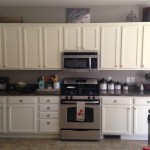
Just Add Paint, Cabinets AFTER 17011 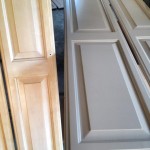
Painting Kitchen Cabinets in Camp Hill, PA 17011 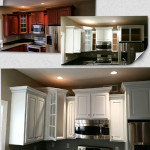
Cabinets in Mechanicsburg, PA 17055
If you enjoyed this article about painting kitchen cabinets from Just Add Paint, check out our Facebook page at https://www.facebook.com/justaddpaint/. Also please let us know if there are any other subjects you would like to see blogs written about. Visit www.PDCA.org to learn more about best practices for painting.
